11 Nov Managing the Business Risks Associated With Change
When a business aims for change, risks are inevitable. In fact, each and every initiative to bring about or facilitate change comes with inherent risks. But too often, businesses tend to be overconfident and think that absolutely nothing can go wrong, and this is where the damage starts bearing its claws. This is why it is important to understand managing the business risks associated with change.
If a business aims to succeed, it should be more than willing to embrace the fact that it is bound to encounter risks. After all, a foundation for change is often laid from risk analysis. To put it precisely, it is an approach that says that the risk of doing nothing is way higher as compared to the risk of doing something new or experimental.
A business can only emerge as successful if it learns to acknowledge and manage risks when going to lead a change initiative, rather than turning a blind eye.
Moreover, the best part is that it is no rocket science when it comes to risk management. With the appropriate strategy, a business can very well ace its risk management plan.
Let’s take this discussion further and see how a business can manage business risks associated with change.
1. Identify
First and foremost, begin by brainstorming and making a list of risky areas. Make sure the list considers and covers intrinsic factors as well as extrinsic factors. For instance, a business should consider and take into account the risk of potential resistance from the stakeholders when initiating a change in the working dynamics.
2. Quantify
As much as it is important to identify risks, know that not all of them are equal in nature.
To put things in perspective, risks that crop up from a slight delay in receiving funds would have a different intensity opposed to a risk when a key partner pulls out of a joint venture.
When you learn to quantify the risk, you learn to decrease the emotional influence and master the art of comparing and analyzing risks.
3. Set a risk threshold
Another important step is to consider the level of tolerance your initiative has towards a potential risk and define a threshold. In case you are not very sure and feel lost about where to start, we suggest you keep the threshold neutral. For instance, set the threshold to 12 if the scale is 1 to 25.
This way, you will be able to compare the risks and work on those that exceed the established threshold count.
4. Formulate a contingency plan
The better prepared you are going to be, the more you plan against potential risks ahead of time. This, in turn, will translate to your business’s success and keep the change initiative on track.
5. Monitor
Perhaps you eradicate one risk as you achieve a milestone. However, it is most likely that reaching that milestone creates another.
To sum up, the goal should be to keep a close watch on potential risks through the journey for things to continue to go smoothly.
We can help guide you and help you understand managing the business risks associated with change.
To find out more, contact one of our talented Risk Advisors today!


No Comments